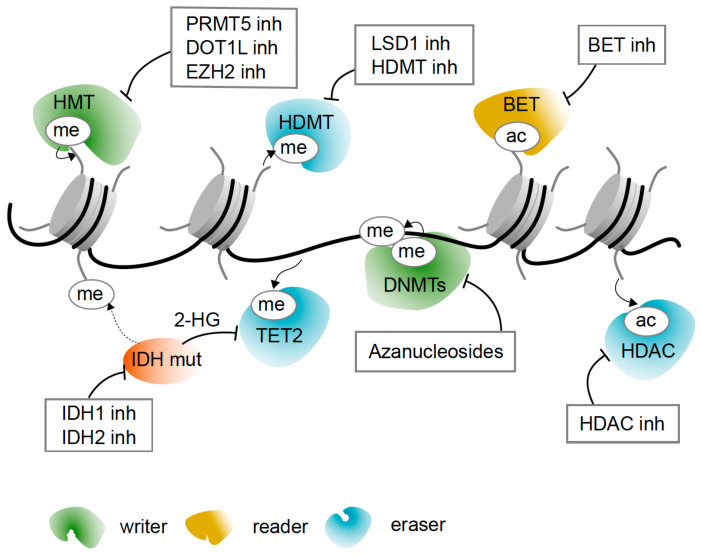Figure 2.
Overview of epigenetic drugs for MDS and sAML therapy. Many epigenetic enzymes are involved in the regulation of gene function. These can be broadly classified into “writers”, which add specific marks to core histones, namely methyl (me) and acetyl (ac) groups; “readers”, which identify the marks; and “erasers”, which remove these marks. DNA methyltransferases (DNMTs) methylate DNA, thereby silencing certain tumor suppressor gene expression. Hypomethylating agents, such as azanucleosides, are thought to reduce DNMT activity, thus reactivating silenced genes. Histone methyltransferase (HMT) inhibitors (inh) that target mutated PRMT5, DOT1L and EZH2 seek to re-stabilize perturbed histone methylation states. Histone deacetylase (HDAC) inhibitors restore histone acetylation, thus activating gene expression to promote differentiation and apoptosis. Ten-eleven translocation (TET) enzymes catalyze the demethylation of 5-methylcytosine to 5-hydroxymethylcytosine to induce active DNA demethylation. Isocitrate dehydrogenase (IDH) inhibitors reduce total serum levels of the oncometabolite, 2-hydroxyglutarate, restoring normal TET2 activity and DNA and histone methylation levels. Bromodomain and extra-terminal domain (BET) inhibitors mainly target BRD4, which normally promotes transcription of oncogenes, such as MYC, by binding acetylated histones.

